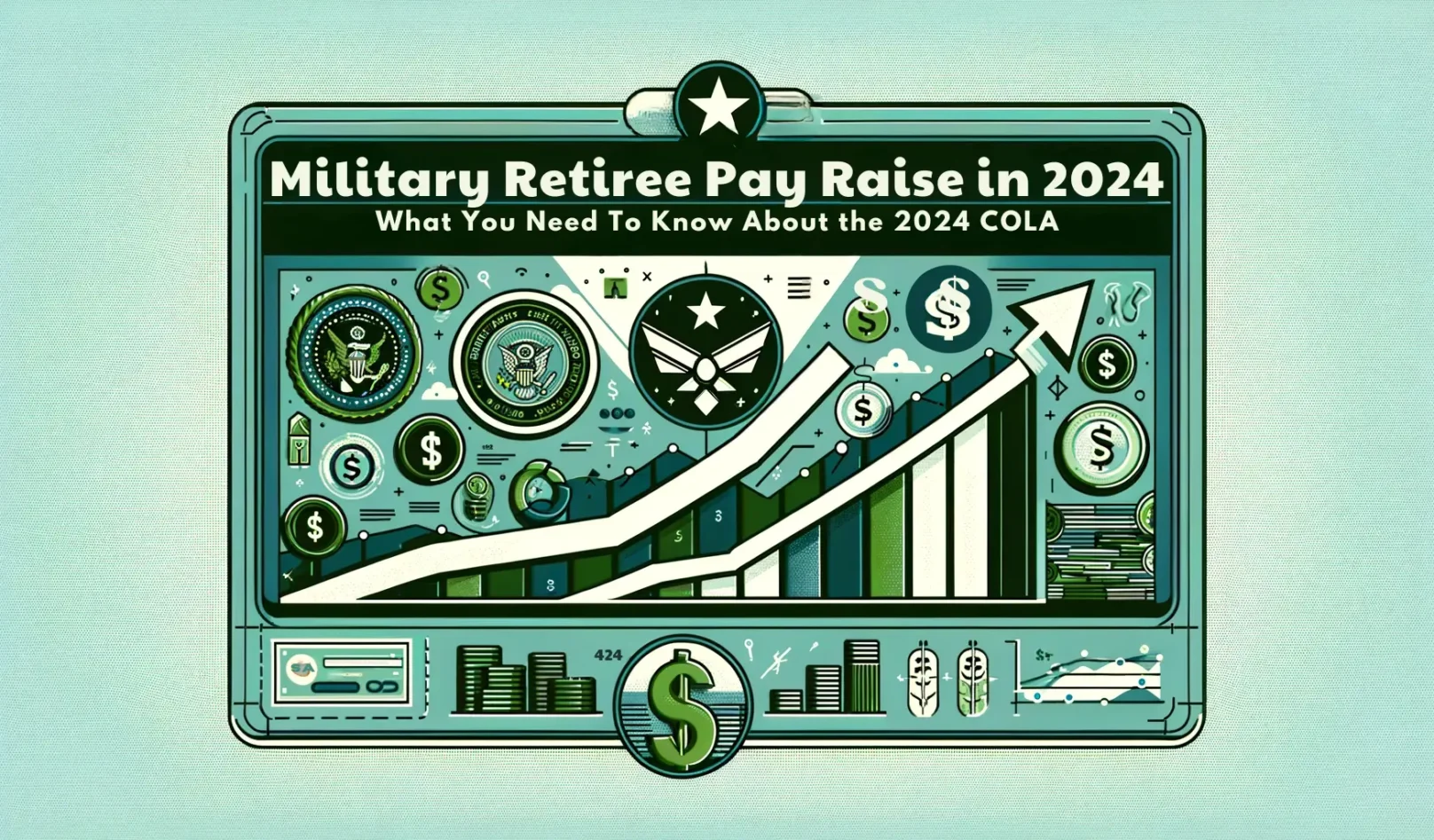
Military Retiree Pay Raise in 2024: What You Need To Know About The 2024 COLA
Military retirees and veterans receiving disability benefits will see a boost in their monthly payments in 2024 thanks to the annual cost-of-living adjustment (COLA). However, the increase will be significantly less than recent years due to slowing inflation.
What is the 2024 COLA Rate?
The Social Security Administration has announced a 3.2% COLA increase for 2024. By law, military retirement pay, VA disability compensation, and other government benefits, including the anticipated federal pay raise 2024, must rise by the same percentage.
This means military retirees will get a 3.2% pay raise in January 2024. For every $1,000 in monthly retirement pension, retirees will see payments go up by $32 per month.
The 3.2% bump is lower than the 8.7% COLA for 2023 and 5.9% in 2022. However, it still beats the 2.6% 20-year average. Slower inflation rates are responsible for the smaller hike next year.
How Does The COLA Impact Military Retirees?
The COLA impacts monthly pension payments for all military retirees. This includes retirees under the Legacy “High-3” system as well as those who opted into the Career Status Bonus and REDUX retirement plans.
However, REDUX retirees will see slightly smaller increases. Their COLA rate is reduced by 1 percentage point to 2.2% for 2024. So REDUX retirees will get a $22 monthly boost for every $1,000 of retirement pay, instead of the standard $32 increase.
Surviving family members receiving Survivor Benefit Plan (SBP) payments will also see a 3.2% raise, matching general military retiree increases.
What About VA Disability Compensation?
Disabled veterans receiving monthly VA disability checks will also get a 3.2% benefits boost from 2024 retired military pay raise,
For a 10% VA disability rating, monthly payments will go up by $5.31. For veterans rated at 100%, monthly compensation will increase by $115.90.
Surviving spouses receiving Dependency and Indemnity Compensation (DIC) will also see a 3.2% increase to their monthly VA survivor pay in 2024.
Why Do Cost-of-Living Adjustments Occur?
COLAs help ensure military retirement pay, VA benefits, and other government payments keep pace with inflation. When prices rise on the economy, COLAs boost benefits to protect purchasing power.
The COLA is based on the Consumer Price Index (CPI), which tracks costs for a basket of common consumer goods and services. When the CPI goes up, a COLA raise is triggered. If there’s no inflation, there’s no COLA.
For 2024, inflation slowed after spiking during the pandemic. So while prices are still high, the COLA doesn’t need to be as dramatic.
Who Else Gets A COLA Boost?
The 2024 COLA impacts about 1 in 5 Americans. Beyond military retirees and disabled vets, increases also apply to:
- Federal civilian retirees
- Social Security recipients
- Civil service annuity recipients
- SSI recipients
Across these groups, the average COLA hike will be about $59 per month for each beneficiary.
COLA Increases vs. Retirement Pay Caps
It’s important to note that COLA raises can sometimes be restricted by pay caps. If current retirement pay already hits a legislated maximum amount, COLAs may not take effect until you fall back under the cap.
Additionally, some beneficiaries see their COLA increases partially offset due to receiving other government benefits. For example, veterans collecting both retirement pay and disability pay.
FAQs
How is the COLA percentage calculated?
The COLA rate is based on the Consumer Price Index (CPI) published by the U.S. Bureau of Labor Statistics. The CPI measures the changing prices of common consumer goods and services over time.
The COLA percentage is the CPI change between the third quarter average of the current year vs. the third quarter average of the previous year. If prices increased over the 12 month period, there is a COLA. If not, benefits remain flat.
Why do COLA increases vary from year-to-year?
COLA percentages are tied directly to inflation as measured in the economy. Depending on economic conditions each year, the inflation rate can fluctuate up and down, leading to differing COLA amounts.
Recently inflation spiked due to pandemic impacts and government stimulus programs. This led to dramatic COLA hikes of 8.7% for 2023 and 5.9% for 2022. Yet as inflation moderates, 2024’s COLA dropped back down to 3.2%.
Can there ever be zero COLA or even reductions?
Yes. If the CPI measurement showed no inflation or even deflation over a 12 month period, the COLA increase could be zero. Benefits would remain unchanged for the next year.
By law, benefits cannot decrease due to COLA math. At worst they stay flat if prices remain the same or fall. So COLAs provide payment protection against loss of purchasing power.
When does the updated COLA amount take effect?
Each year’s COLA raise takes effect in January for government retirement and disability programs. The specific date may vary slightly by system. However, recipients see bigger benefit checks in January statements based on the previous Fall’s inflation data.
So the 2024 COLA of 3.2% will boost military retirement pay, VA compensation, and Social Security checks beginning in January 2024.
Can special groups get higher COLAs?
No. By law, COLAs must be consistently applied across federal retirement systems. All groups covered by COLA provisions (military retirees, federal retirees, Social Security, VA disability, etc.) receive the same annual percentage boost.
Congress would have to pass special legislation to allow one group to receive significantly higher COLAs compared to others.
The Bottom Line
The 2024 COLA has been set at 3.2%, which will modestly boost retired military pay and VA disability benefits next year. While not a big hike, it will provide some relief and ensure payments keep pace with inflation.
Veterans should ensure they understand exactly how the COLA may impact their particular monthly stipends based on retirement plan or VA claim ratings. Overall though, a 3.2% pay bump is welcome news for retiree checkbooks in an uncertain economy.
